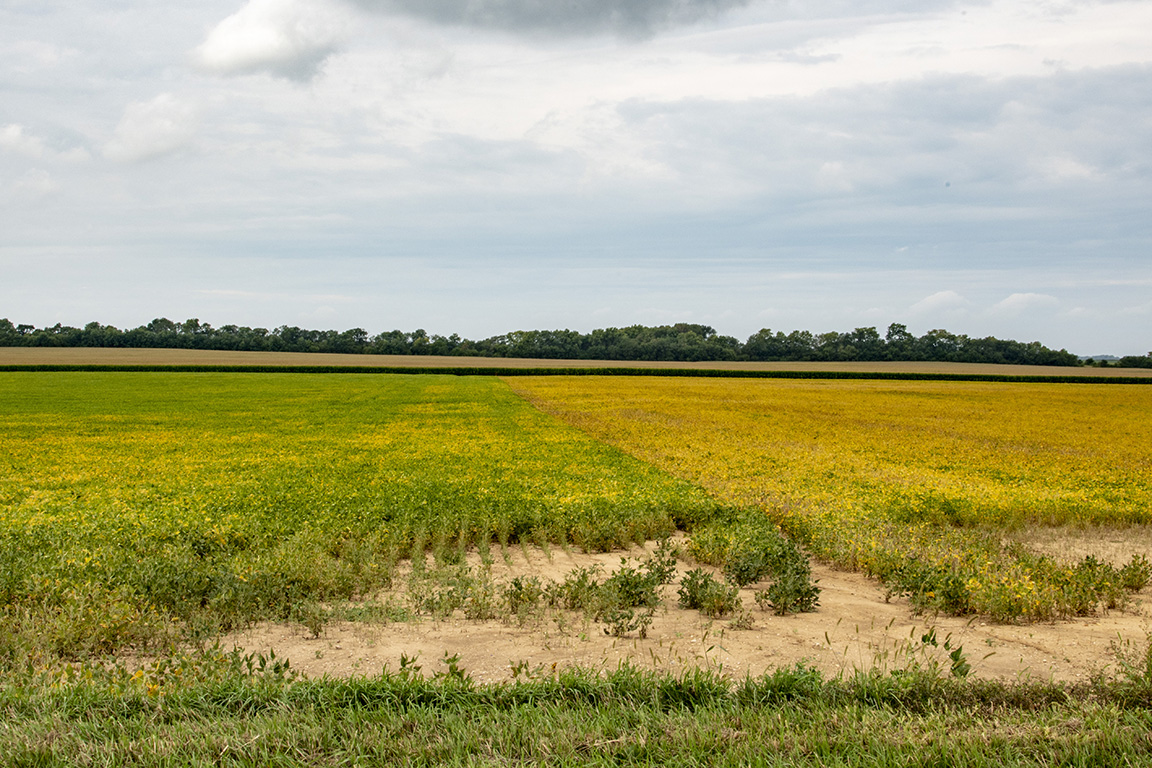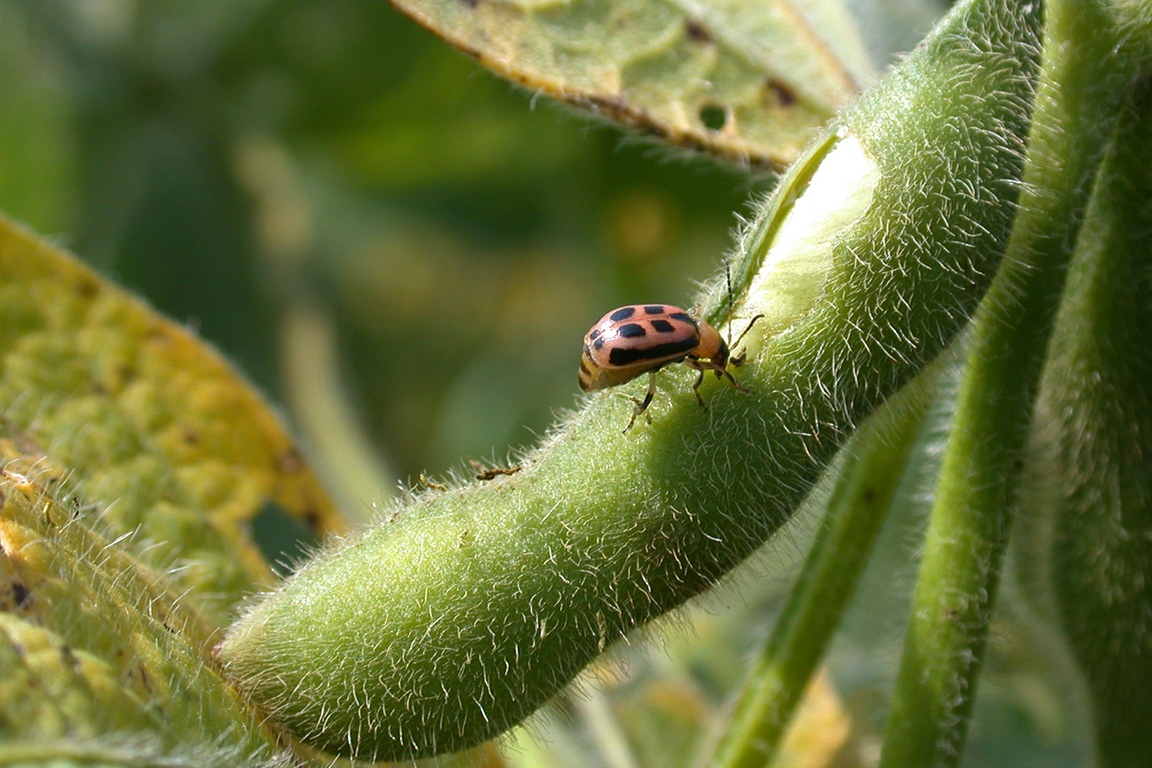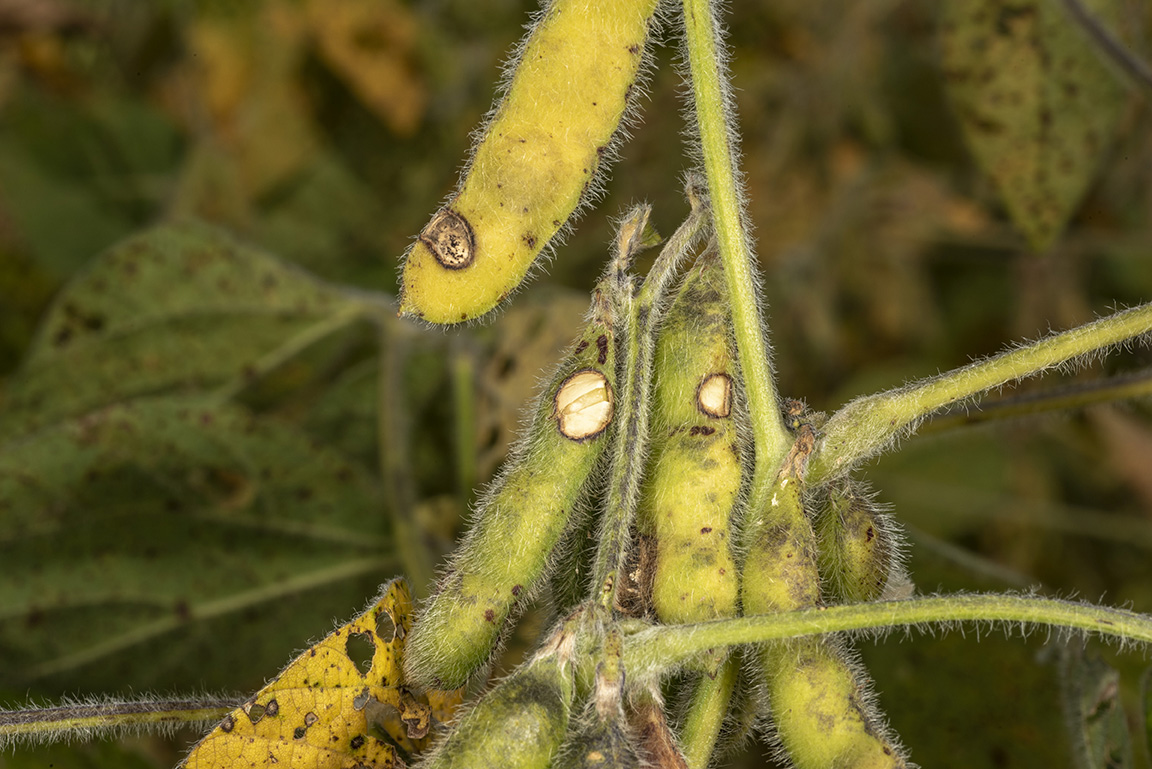Within the past week, we’ve noticed a movement of bean leaf beetles from an early-maturing soybean field, i.e., yellowing leaves, to nearby “green” fields. Green soybean fields, especially those that are behind neighboring fields in development, should be monitored for this beetle. Bean leaf beetle will be attracted to these “trap crops” and begin to feed on the softer green pods as the foliage begins to yellow. Bean leaf beetles scar the surface of pods, but only occasionally feed through the pod to the developing beans. The problems come later, during pod maturation. At that time, this scar often cracks as it dries out, leaving an entry hole for moisture and airborne plant pathogens that may cause discolored, moldy, or shriveled beans.
It is important for pest managers to be able to predict whether economic damage will occur based on the numbers of beetles that are present now and the stage of pod development (i.e., green, yellow, yellow-brown, or brown pods). Once the pods turn yellow to yellow-brown, they become unattractive and less susceptible to damage (this is also part of the reason behind the movement from drying beans to still-green fields). Control is normally not warranted when pods are yellow or brown, and you likely won’t contact many beetles with these sprays.
To scout bean fields for pod damage: randomly select 2 plants in each of 5 areas of the field and count the number of pods per plant and the number that show damage (i.e. 10 total plants). Calculate the percentage of damaged pods per plant for the field as a whole. Note whether the pods are green, beginning to turn yellow, or are yellow/brown. You should also determine the number of beetles per sweep using an insect sweep net. Take 5 sets of 20 sweeps in the field. Determine the number of bean leaf beetles per sweep.
Use the following table to determine when a treatment may be necessary.
| No. of beetles per sweep in 30 inch (7 inch) row spacing | |||
|---|---|---|---|
| Pod Injury Level | Less than 4(3) | 4(3) to 7(5) | More than 7(5) |
| 0 to 8% | Discontinue sampling | Sample again in 5 days | Control (preventive) if pods still green |
| 8 to 12% | Samples again in 5 days | Control if pods are still green | Control if pods are green to yellow |
| Over 12% | Control if pods are still green and beetles are present | Control unless pods are completely dry | Control unless pods are completely dry |
| Table modified from the University of Illinois | |||
If a treatment is deemed justified, be mindful of the insecticide’s pre-harvest interval (PHI) which is stated on the label, this is the number of days before one can legally harvest those soybeans. It varies widely, with some recommended insecticides having a PHI of 45 days, which may be too long for some planned harvest windows.





